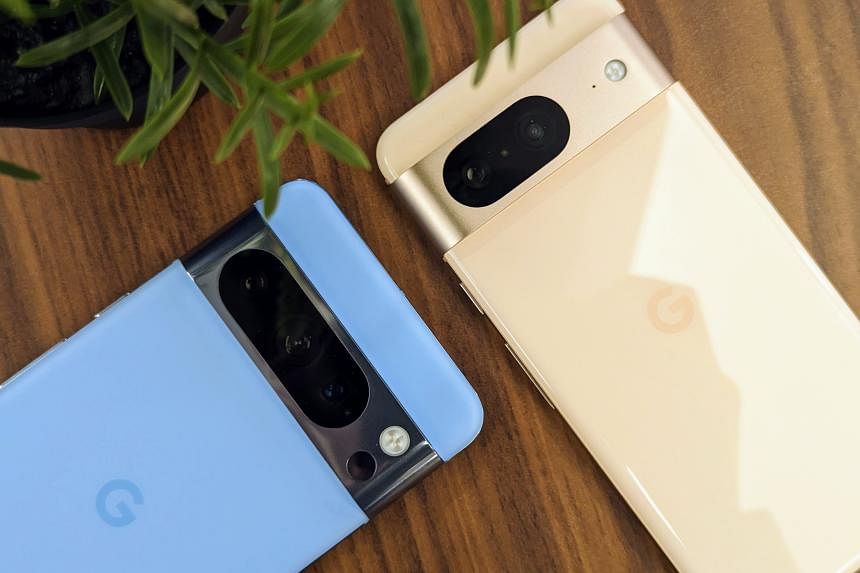SINGAPORE – The Google Pixel 8 and 8 Pro have hit the shelves, bringing with them better screens, cameras and more artificial intelligence smarts.
The duo’s mostly incremental upgrades to 2022’s Pixels are welcome additions, but the phones’ tendency to heat up and question marks over when their full suite of AI tools will roll out here make the higher price tags hard to stomach.
This is especially true for the Pixel 8 Pro, which has seen a more than $200 jump – starting from $1,549, this puts it in iPhone territory. Meanwhile, the standard Pixel 8 is $100 more than its predecessor, starting from $1,099.
But Google has a card up its sleeve: Seven years of software updates, which is unprecedented for an Android device, as manufacturers typically provide support for up to four years or so.
This makes it hard to look past the new Pixels, even if questions linger about whether the phones are truly built to last.
In the hand, the Pixels feel like thousand-dollar phones thanks to their solid build and design.
The corners on both devices are slightly more rounded compared with 2022’s Pixels, making them nicer to hold (and somewhat like an iPhone).
The 8 Pro’s gorgeous matte light blue glass appears similar to the iPhone 15’s colour-infused glass back, keeping away fingerprints while looking more premium than the polished glass of its smaller brother.
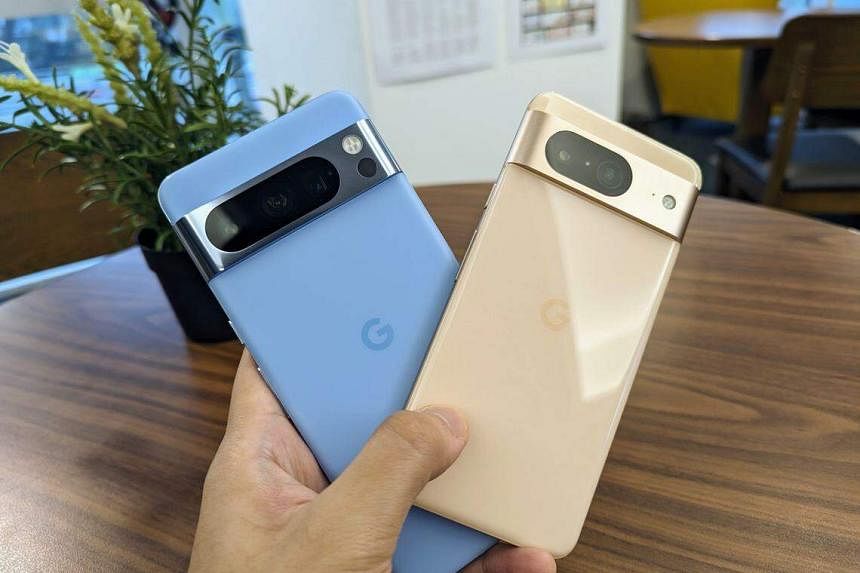
In a welcome move, the standard Pixel 8 has shrunk slightly to 6.2 inches when compared with the Pixel 7’s 6.3 inches, making it more comfortable to hold in one hand.
But users are unlikely to savour the Pixels’ looks for long, as I expect most will slap on a case to get a better grip on the slippery surfaces.
The devices also get so hot that they are uncomfortable to hold without a case, an issue I seriously hope Google manages to fix with a software update like the iPhone 15s.
The 8 Pro, in particular, got noticeably warmer when I switched between apps and experimented with its AI tools.
And, under the sunlight, both phones become so uncomfortably hot that I would say they are close to unusable.
AI smarts
Speaking of tools, Google has doubled down on AI features with its latest phones, truly establishing a real niche of its own in the saturated smartphone market.
Simply put: The Pixels remain the smartest smartphones around.
It starts from simple things like telling me what song is playing in the background before I even think of asking, to making pretty accurate predictions on which apps I would use next on the app menu.
On the downside, its audio transcription, a tool I find difficult to live without on other phones, still does not work well with the Singaporean accent.
Exclusive to the new phones are their AI image editing tools, even if they remain more of an impressive party trick at this stage.
The tool I found most useful is Best Take – a solution to accidental blinking or other “unglams” in group photos, or simply to pick a better look.
Though there are purists who may find this slightly questionable, the Pixel knows when a series of similar group photos are taken and allows the user to splice them together by selecting faces from different shots into a single frame.
It is remarkably simple to use, but to varying success as any change in angles or tilting of heads can throw off the AI, resulting in a warped edit that is pure uncanny valley.
Another headlining feature is the Magic Editor, which uses generative AI in the vein of Midjourney to edit and essentially overhaul photos into pure fictional territory.
By simply shading or tapping on objects, the sky, or other areas of a picture, the editor can help you remove objects, shift them around, or completely transform them.
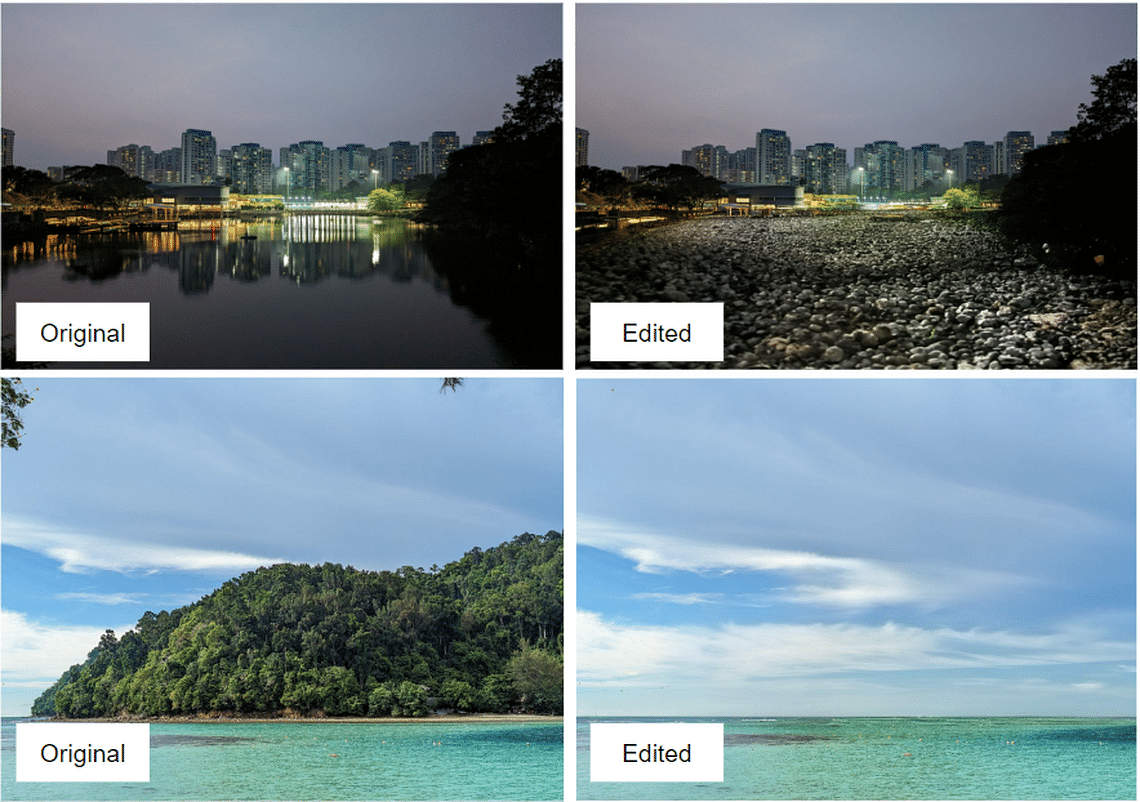
The software works best with clearly defined layers. It offered realistic alternatives for such images, turning a pond into a bed of rocks and even eliminating an island to create a seascape.
But Magic Editor began showing its limits with trickier backgrounds that were not separated clearly by different colours. When applied to a picture of a grey car against a backdrop of cliffs and a cloudy sky, for instance, the AI had difficulty neatly isolating the car, resulting in a distorted image.
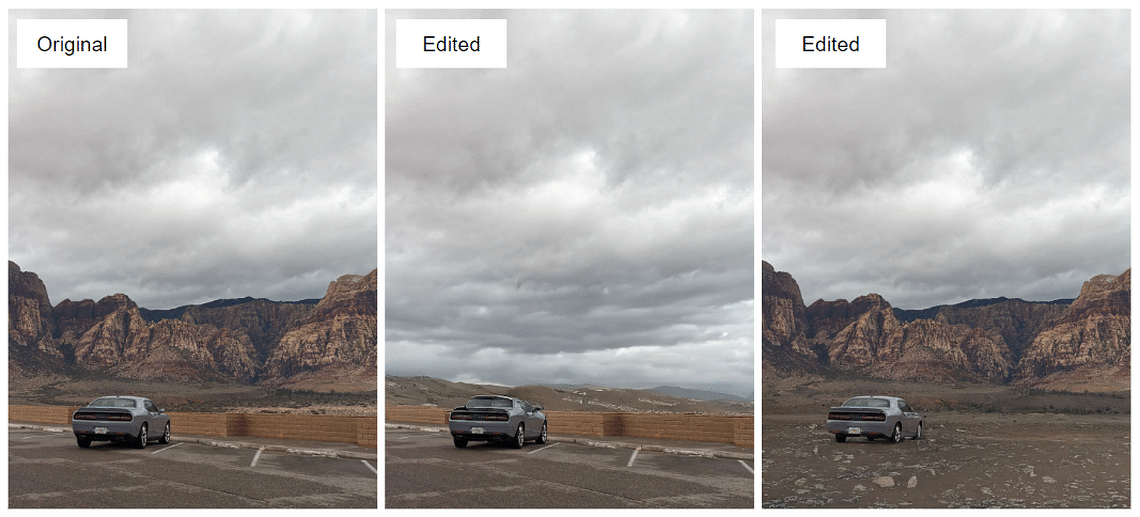
The AI photo editor’s suggestions can be hit or miss, with some of its misses being quite perplexing or out of this world.
And, like Midjourney, the Pixel’s AI does not seem well-trained to spot hands and feet, often blending them into the environment by mistake.
Magic Editor and the Pixels’ suite of AI image tools are sure to impress first-time users, but with its inconsistencies, it is ultimately hard to imagine users using it seriously for now.
Many of the most practical AI tools are disappointingly not ready to be rolled out, like the Pixel’s AI assistant technology, which was heavily marketed at its launch early October.
Among the missing touted features are the Pixel’s virtual call assistant that speaks to callers on your behalf, and the ability to summarise articles by summoning Google Assistant.
There is also no guarantee of when – or if – these features will be fully rolled out here.
When asked, a Google spokesman said they are still in an experimental phase with no due date.
Top tier cameras
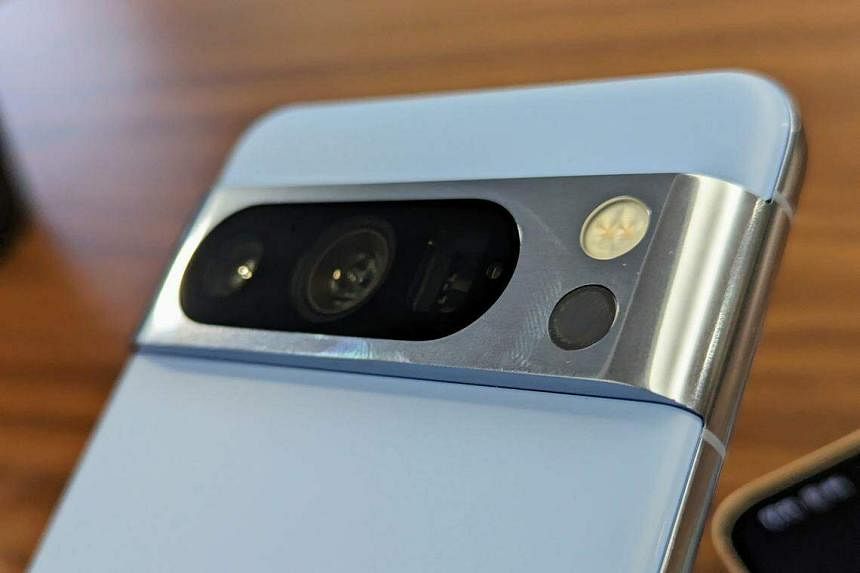
In the camera department, the Pixel is as reliable as ever thanks to its image processing software that helps add deeper contrast to the shadows that the camera does not pick up.
Photos have a cool tone and a crisp finish that users have come to expect.
After using an iPhone 15 for several weeks, I noticed how heavily processed the Pixel’s shots are.
For better or worse, the Pixel’s image-processing technology neatens up most shots that users throw at it. It tightens up blurry edges and dimly lit surfaces and makes them more than presentable to most users, although devotees of the iPhone’s more natural image profile will not be won over.
Where the phone shines is in low-light conditions. Both Pixels are able to extract colour from very dim environments, adding details that I did not even notice with my own eyes. It gives enthusiasts more raw material to work with while editing in post.
The Pixel 8 Pro comes with a small selection of “Pro” tools in the camera app, including the ability to bump the megapixels up to 50MP for better details. Disappointingly, these “Pro” options are omitted from the Pixel 8, despite it also having a 50MP camera like its bigger brother.
Should I buy?
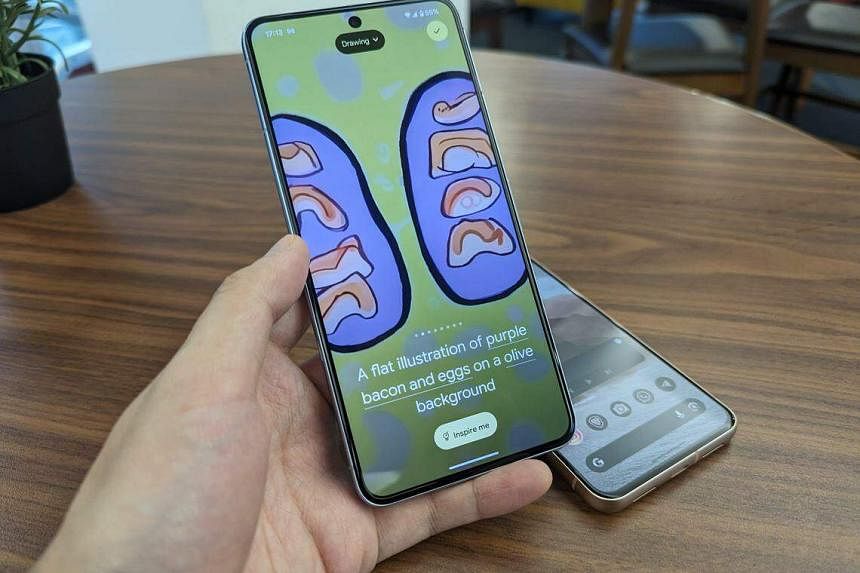
Both the Pixel 8 and 8 Pro also come with improved screens, with the Pixel 8 increasing its screen refresh rate from the Pixel 7’s 90Hz to a smoother 120Hz now. The 8 Pro’s screen is one of the brightest I have handled and is easy to read off, even under harsh daylight.
The improvements are all welcome, and just about justify the price hike for the standard Pixel 8, which I believe will prove to be a trusty phone as long as Google sorts out its heating issues.
On the other hand, the new features Google has brought to the phones feel more gimmicky on the Pixel 8 Pro, which, given the steeper price jump, makes it tougher to look past the half-baked AI tools and even more so with those that have yet to be rolled out.
The Pro model also has a temperature sensor nestled beside the camera lenses, but I have yet to find a good reason to use it since Google disclaimed to users that the sensor is not intended to measure body temperature or food.
The Pixel 8 Pro is by no means bad – it is still one of the best phones you can buy, but I would wait for a discount before pulling the trigger to maximise your dollar. And since Google has kindly extended software support to seven years, there is no rush anyway.
